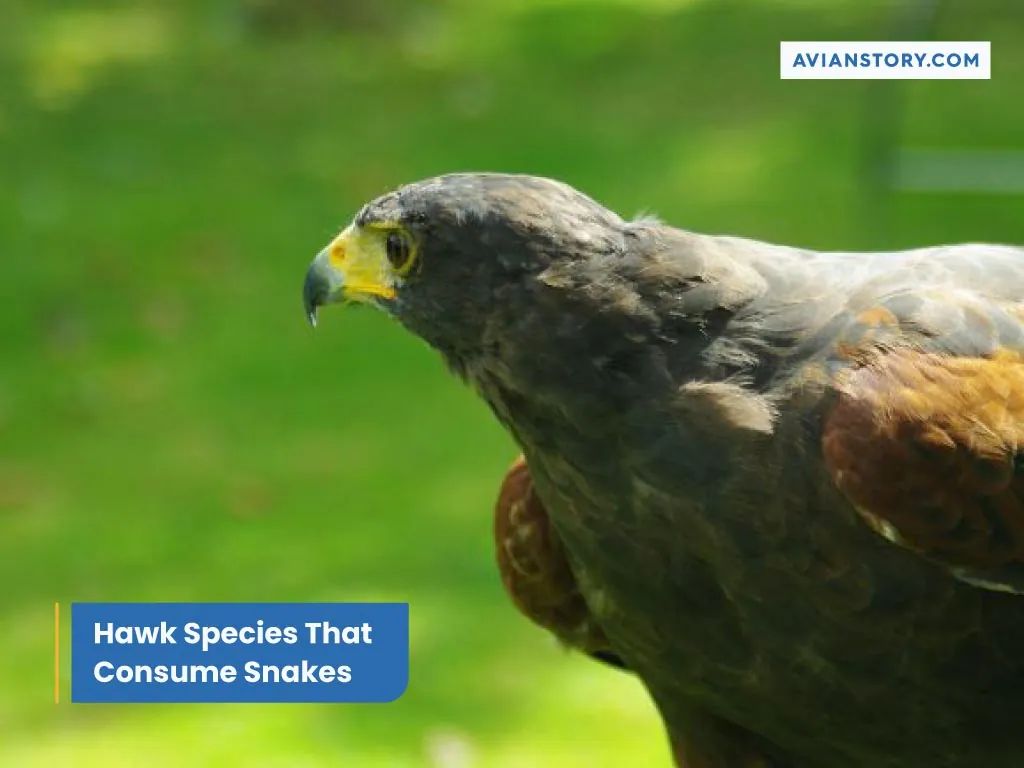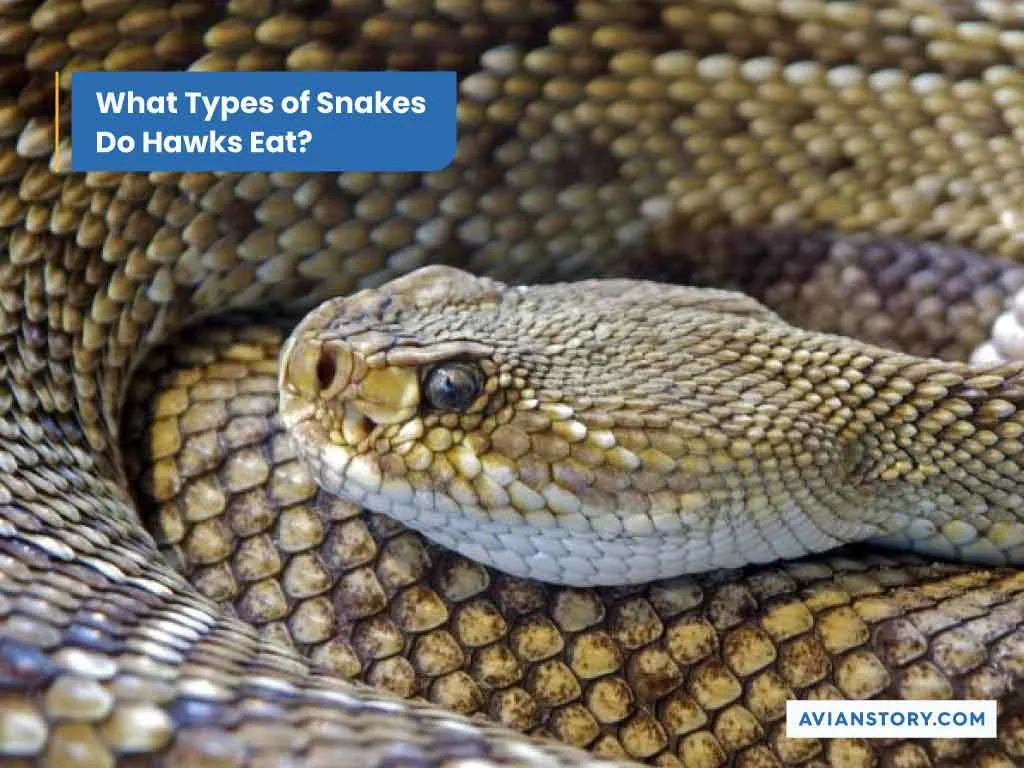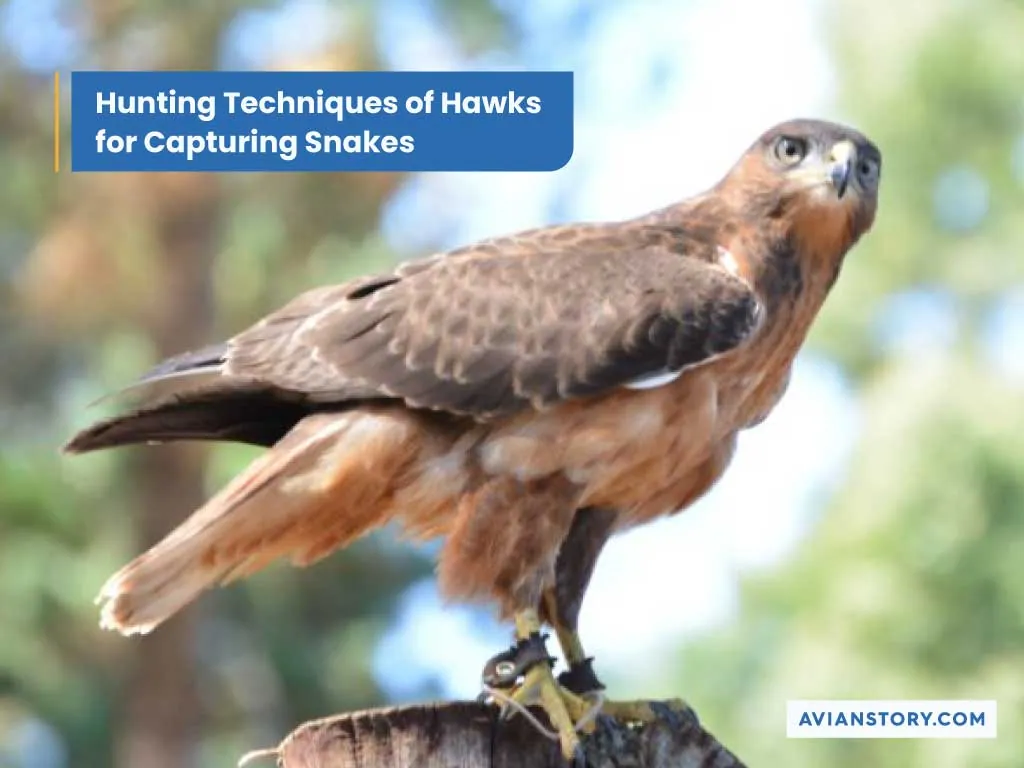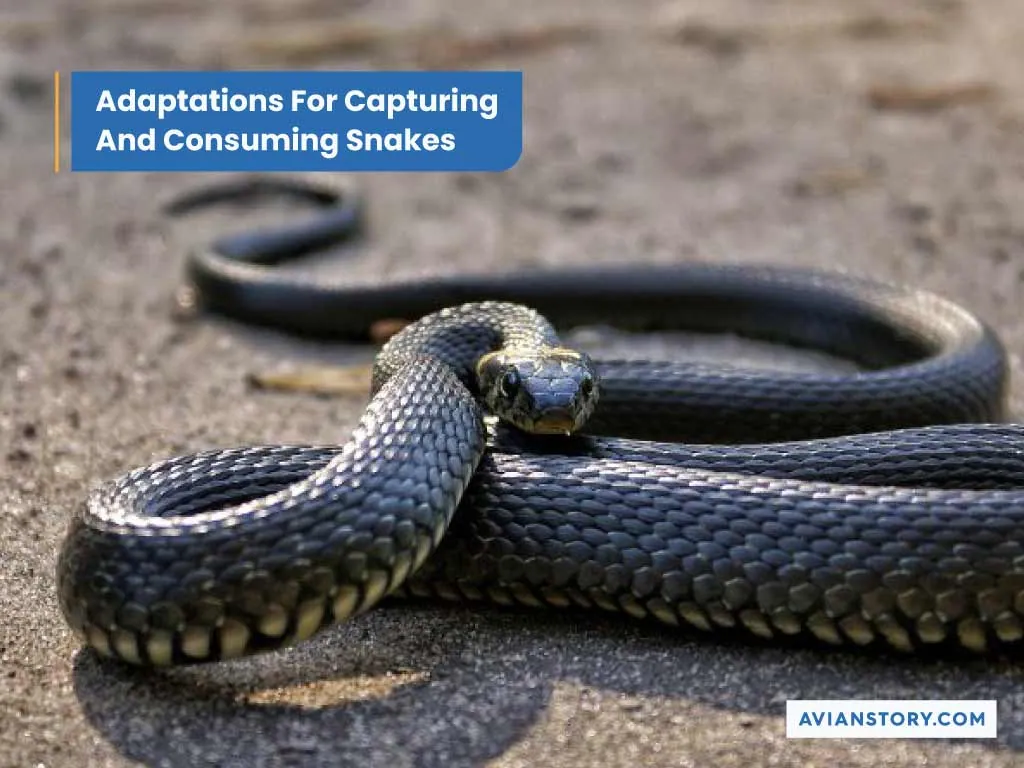Do Hawks Eat Snakes: Snake Species Consumed By Hawks
Hawks are birds of prey that survive by feeding on various small animals, especially rodents. However, their diet is not always only on these species but can also include some types of reptiles.
So, do hawks eat snakes? Yes. Snakes are among the reptiles that various hawk species eat. Harris’s and Red-tailed hawks are among the raptors known to feed on these reptiles. And rat snakes and rattlesnakes are among the venomous and non-venomous snakes they eat.
This article discusses more on the Hawks’ predation on snakes. You’ll learn about the various types of snake hawks can eat, the hunting techniques used, and the impact on the ecosystem. Therefore, read on.
Hawk Species That Consume Snakes

Among the 200 hawk species in the world, at least 50 species can comfortably feed on snakes. The following table lists various hawk species and the types of snakes they can eat.
| Hawk Species | Prey Snake Type |
| Red-tailed Hawk | Garter snakes Rattlesnakes Rat snakes |
| Red-shouldered Hawk | Black rat snakes Kingsnakes Rattlesnakes |
| Swainson’s Hawk | Gopher Snakes |
| Broad-winged Hawk | Northern water snakes Garter snakes |
| Harris’s Hawk | Garter snakes Corn snakes |
What Types of Snakes Do Hawks Eat?

While hawks can eat snakes, they don’t prey and eat all the species of snakes. Some, like cobra snakes, are rather avoided, mostly because of their size. Hawks eat venomous and non-venomous snakes, depending on the location and availability. Following are the various types of snakes they can eat.
1) Non-Venomous Snakes
Some of the non-venomous snake types the hawk prey on include
Garter snakes
Garter snakes are found in gardens, forests, and meadows close to a water source. These reptiles have three light stripes that run along their bodies and often have black, brown, gray, or olive bodies. They are often preyed on by Harris and Red-tailed hawks.
Rat snakes
Rat snakes prefer living in rocky hillsides, woodlands, and flat farmlands on nearly every continent. Their bodies are often black, gray, or blown, with blotches and stripes. Red-tailed hawks often prey on them, which is sometimes laborious since they can grow past six feet.
King snakes
King snakes are moderate-sized to large snakes found in brushy hillsides, river valleys, woodlands, and on rock outcrops. They have a shiny appearance with yellow bands all way down. These reptiles usually grow to between 3.0 and 4.5 feet and are prey to Red-tailed and Red-shouldered hawks.
Corn snakes
Corn snakes can inhibit overgrown fields, trees, Flatwoods, and on forest openings. They are slender with orange or brownish bodies and large red blotches. These snakes can grow up to six feet and are preyed on by Harris’s and Red-tailed hawks.
2) Venomous Snakes
Following are the venomous snake types hawks can eat
Rattlesnakes
Rattlesnakes are venomous reptiles found in forests, swamps, deserts, grasslands, and swamps. Their heads are triangular and have thick and scaly bodies. Rattlesnakes can be black, gray, brown, olive, or yellow and have diamond patterns on their bodies. They can grow up to eight feet and are often consumed by red-tailed hawks.
Cottonmouths
Cottonmouths live in swamps, lakes, rivers, rice fields, and sloughs. These reptiles are heavy-bodied with light and dark brown patterns and dark spots. They grow up to 4 feet and are often eaten by red-tailed and Cooper’s hawks.
Copperheads
Copperheads are venomous brownish-gray snakes with an hourglass-shaped pattern on their backs. They are found in forested habitats and prefer living near streams and waterways. Their lengths range between 2-4 feet, and they’re often preyed on by Red-tailed hawks.
3) Factors Affecting Snake Consumption
Various factors affect snake consumption by hawks. They include
Geographic distribution
Hawks and snakes are in every continent except Antarctica. This availability and distribution increase their predation. Also, snakes are not the only reptiles they can consume, as they also prey on lizards. So, do hawks eat lizards? Yes, they do when their favorite food sources are unavailable.
Habitat
Most snakes prefer living in woodlands, grasslands, and forested areas. Hawks also prefer these habitats, where they prey on the already available snakes as an optional food source.
Snake size and behavior
Snake sizes matter since the longer ones can easily coil around an attacking avian predator and subdue it. However, snakes are available in many sizes, providing hawks with options.
Hunting Techniques of Hawks for Capturing Snakes

Hawks use various techniques to hunt and capture snakes. They include
A. Perch hunting
The perch hunting technique involves the hawk perching and patiently waiting for a snake to crawl by. Once it spots one, it swoops in and grabs it with its powerful talons.
B. Ground hunting
Ground hunting is a technique often used by hawk species, like ferruginous which hunt by standing on the ground or perching near the ground. The hawk pounces on the prey and captures it once it spots it.
C. Aerial attacks
This technique involves the bird soaring high looking for prey. Once the hawk spots the snake, it dives down, catches it then flies away to eat it in another location.
Adaptations For Capturing And Consuming Snakes

Various adaptations enable hawks to be able to capture and consume snakes. They include.
Physical adaptations
Some of these physical adaptations include
Talons
Hawks possess powerful talons, used to hold and choke the snake and kill it faster. They often grab the snake tightly near its head to avoid being bitten.
Beak
Hawks’ beaks are curved and sharp at the end. They use their beak to tear through the snake’s flesh while eating it.
Vision
Hawks use their strong sight to spot snakes as they crawl from afar. This vision allows them to swoop in and capture the prey off guard, increasing their chances of success.
Behavioral adaptations
Hawks’ behavioral adaptations include.
Stealth and surprise
Hawks can stealthily approach a snake from above and catch it by surprise. Since snakes hunt animals on the ground, they are less likely to be weary of threats from the skies, which makes them easy targets.
Patience
Hawks patiently wait for a snake to crawl by or get into a suitable position before attacking it. Their patience contributes to their hunting successes.
Handling venomous snakes
Hawks are not venom-proof, and snakebites were diagnosed on several dead hawks by researchers. Therefore, to avoid biting, they use a special matador move where they spread their wings to distract and capture the snake.
Impact of Snake Consumption on Ecosystems

Snake consumption has various impacts on the ecosystem. They include
a) Population control of snake species
The population of the snake species preyed on by hawks may become reduced. This often happens when hawks actively hunt for them.
b) Effects on prey species of snakes
Snakes are often referred to as natural pest control as they consume various types of small animals. When hawks prey on snakes, the population of these animals increases, creating an imbalance in the ecosystem.
c) Impact on the food web
Since both hawks and snakes are predators, they control the number of small animals. When they prey on each other, there is a disruption in the food web. The impact on the food web is on the plants due to the increased primary consumers.
Human Impact on Hawks’ Snake Predation
Humans have an impact on the hawk’s predation on snakes. Following are the ways humans impact predation.
a) Habitat loss and fragmentation
Humans fragment or damage snakes’ and hawks’ habitats through deforestation and urbanization. These predators are then forced to live in new territories and often too close to each other.
b) Pollution and pesticides
Pesticides reduce the prey animals for hawks, increasing their predation on snakes. Also, pesticides used on farms affect hawks through rodenticide poisoning. Since they are opportunistic feeders, they can consume carrions infected with pesticides.
Pollution from human activities affects Hawks and snakes, often forcing them to change habitats. In the new habitats, they often live close to each other, and predation increases.
c) Climate change
Climate change has also resulted in hawks and snakes changing their native habitats. Since their preferred habitats are alike, they often end up living in the same place.
Conservation Efforts
There are various conservation efforts to help reduce hawks’ predation on snakes.
a) Habitat restoration and preservation
One conservation effort involves restoring hawks’ and snakes’ habitats, providing them with more options. In case of destroyed habitats, preservation efforts can help keep these predators in their preferred habitats.
b) Education and awareness campaigns
Educating people through awareness campaigns can also help reduce hawk predation on snakes. They become aware of how their actions, like pesticides, change the hawks’ diet.
c) Species reintroduction programs
Species reintroduction can also work by providing the hawks with their preferred prey. The new food source reduces their predation on snakes and other predators.
Conclusion
As you now know, hawks can consume snakes. Red-tailed, red-shouldered, broad-winged, and Harris’s hawks are among the snake-eating raptors. They hunt on various venomous and non-venomous snakes, including rattlesnakes and cottonmouths.
Various adaptations, like the powerful talons and vision, help the hawks prey on these reptiles. Humans have contributed to the hawk’s snake predation by taking their native habitats and preferred prey. However, various conservation efforts discussed in the article have helped reduce predation.
Reference and Resources:
- https://pubmed.ncbi.nlm.nih.gov/7760504/#:~:text=snakebite%20was%20diagnosed
- https://www.vet.cornell.edu/news/20220707/rodenticide-poisoning-widespread-among-state-s-red-tailed-hawks#:~:text=CVM%20News-,Rodenticide%20poisoning,-widespread%20among%20state%E2%80%99s
